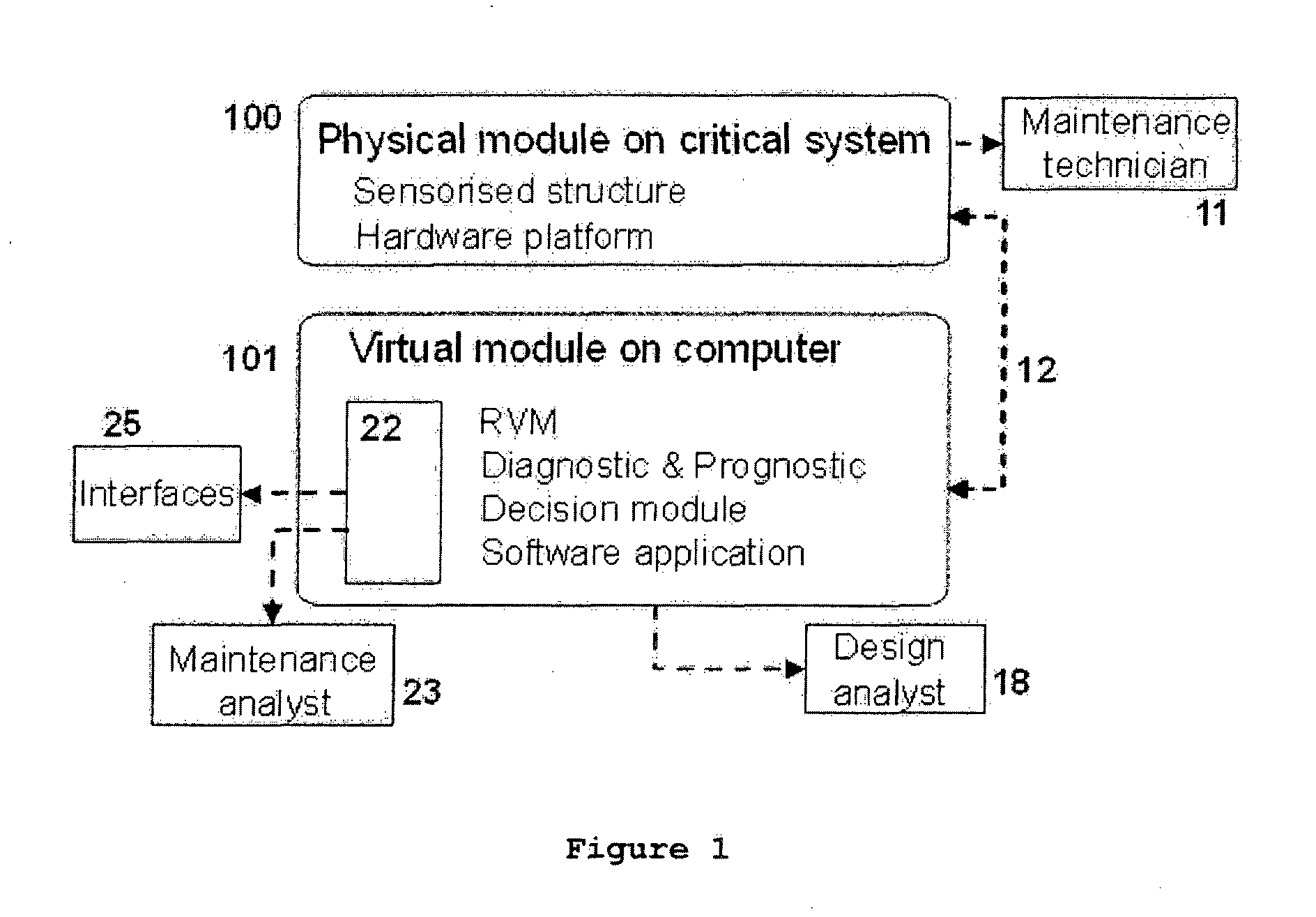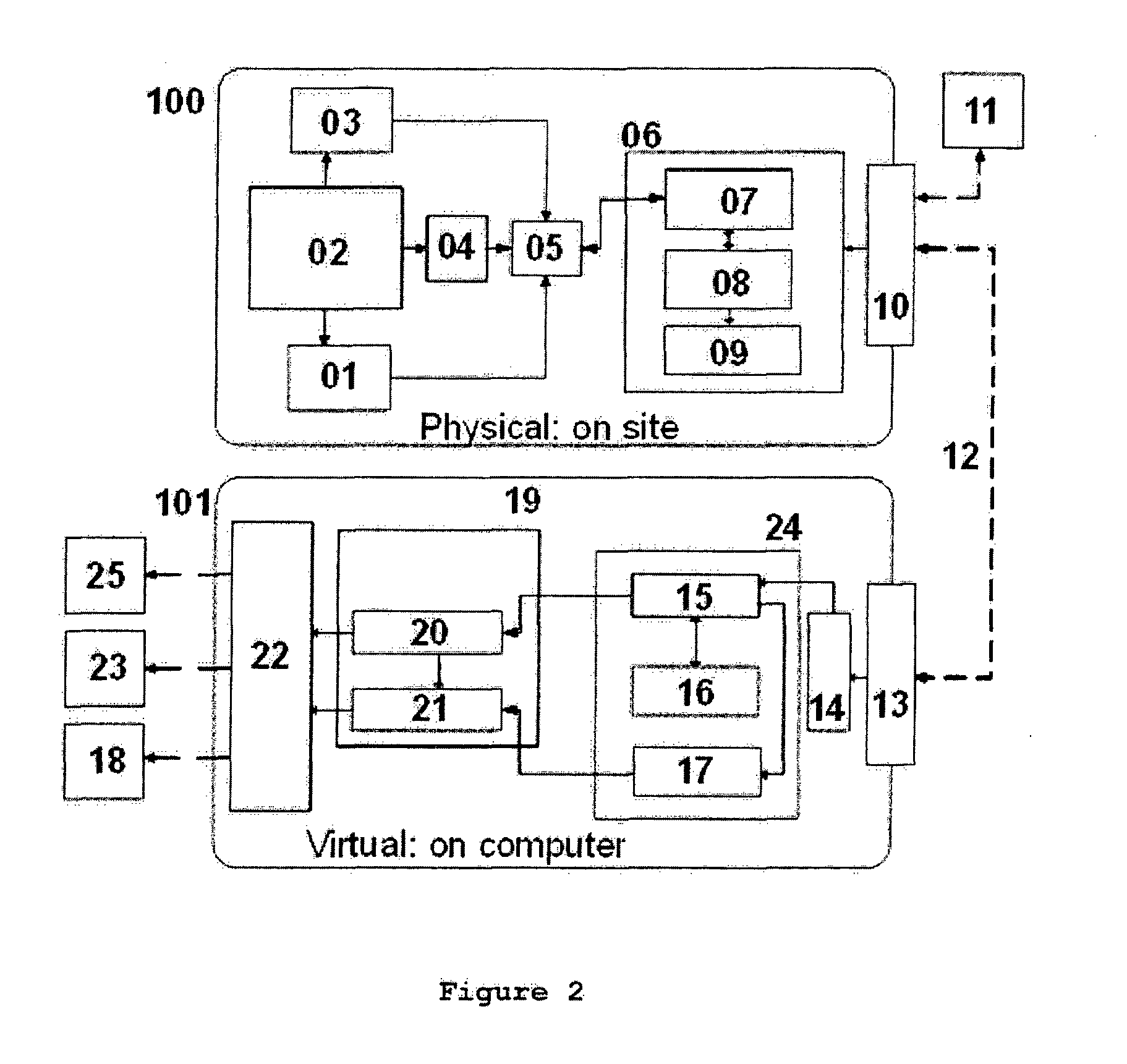Structural health management system and method based on combined physical and simulated data
- Summary
- Abstract
- Description
- Claims
- Application Information
AI Technical Summary
Benefits of technology
Problems solved by technology
Method used
Image
Examples
Embodiment Construction
[0110]Referring to FIG. 1 the structural health analysis system is defined by two modules: a physical module 100 and a virtual module 101.
[0111]The physical module is located in the critical system. The sensor network is placed on selected components / structures to monitor. The sensors network can be based on commercially off the shelf (COTS) components or on self-sensing materials. The sensors are connected to a data acquisition system (an additional one or supported by an already existing Flight-Data Acquisition Unit—FDUA, or a Supervisory Control and Data Acquisition system—SCADA). The virtual module is located in a computer. It can be placed in the critical system or in another location. A convenient data exchange scheme between the two modules is adopted (cable, wireless or a portable data storage device).
[0112]The structural health analysis system can work synchronously, where real and simulated data are combined immediately given the current health status selected of the compo...
PUM
 Login to View More
Login to View More Abstract
Description
Claims
Application Information
 Login to View More
Login to View More - R&D
- Intellectual Property
- Life Sciences
- Materials
- Tech Scout
- Unparalleled Data Quality
- Higher Quality Content
- 60% Fewer Hallucinations
Browse by: Latest US Patents, China's latest patents, Technical Efficacy Thesaurus, Application Domain, Technology Topic, Popular Technical Reports.
© 2025 PatSnap. All rights reserved.Legal|Privacy policy|Modern Slavery Act Transparency Statement|Sitemap|About US| Contact US: help@patsnap.com



